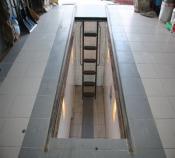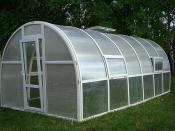Search
Login
Recommended
Rhododendrons - varieties, care, reproduction
Rhododendron is often confused with azalea, indeed, azaleas belong to the genus rhododendron, but most of them are thermophilic and are more suitable for growing indoors. Garden azaleas and rhododendrons have the same requirements, and the varieties and color of the flowers are endless. Rhododendron is considered an unpretentious plant, despite this, it is worth paying attention to the recommendations in order to get a healthy and flowering shrub.
Content:
- Rhododendron varieties
- Rhododendron, landing video
- Care video
- Pruning
- Why rhododendron garden does not bloom
- Breeding
Rhododendron varieties
Rhododendrons are represented in more than 800 species, these are shrubs and small trees, various shades and shapes of a flower, frost-resistant and heat-loving, evergreen hybrids and deciduous. Undoubtedly, all rhododendrons are decorative, but we note only the most unpretentious, frost-resistant species.
- Rhododendron deciduous mollis begins flowering in late May with yellow, orange or red flowers. The buds do not freeze, the bush reaches 2 m.
- Rhododendron spiky blooms in early May, the flowers are sensitive to late frosts, the most hardy variety is Pink Cornell.
- The hybrid of rhododendron and azaleas Aurora Borealis withstands frosts of up to -45 C, blooms densely in late May, adult shrubs up to 2.5 m in height.
- Azalea Roseshell Azalea blooms in May, tolerates frosts up to -35 gr.
- Rhododendron PJM is an evergreen frost-resistant species (up to -35 gr), prefers sandy soils.
Rhododendron, landing
Planting of rhododendrons is possible in April or September - October, choosing shrubs, pay attention to the soil in the container, if the earth is dry, this indicates a possible damage to the roots. Leaves of seedlings should be without spots, tears and other undesirable changes.

The success of growing plants largely depends on the choice of planting location, azaleas like partial shade and high humidity, in close proximity to conifers and a pond (stream or pond, but this is not a prerequisite). Rhododendron requires a permeable and acidic soil with a pH of 4.5 - 6, if the soil does not match, the site for planting is dug up with a mixture of peat, pine bark and compost.
Bushes are planted so that the upper roots are 2-3 cm above the soil, if they are deepened, the plant will slow growth and the trunk will rot. After planting, the bush is watered with rainwater, the soil is covered with a layer of mulch, the plant is not fertilized until next spring.

Excess moisture for azaleas is more dangerous than a deficiency if the soil is heavy and impenetrable, the plant is planted on a slope or provide good drainage, for this, 10 cm of pebbles and 5 cm of sand are poured onto the bottom of the pit.
Rhododendron Care
Rhododendrons are especially sensitive to drought during the development of new leaves and flowering, the plant is watered abundantly, but the water should not stagnate. Hard water is softened with oxalic or sulfuric acid before watering. Sometimes rhododendrons suffer from a lack of moisture in the winter, in this case the leaves are wilted on an evergreen shrub, during severe frosts you should not water the plant, wait for the thaw.
Fertilizing has a positive effect on the number of flowers and the growth of rhododendrons, the optimal time for fertilizing is March - June, end of August. The most common symptoms indicating a deficiency of macro - and micronutrients:
- Leaves turn yellow and become brown spots - lack of potassium
- Brown or reddish spots on the edges of the leaves - boron deficiency
- Lightening leaves - lack of iron

To avoid mistakes in the independent calculation of top dressing, you should purchase specialized mixtures for azaleas.
Pruning
In the cultivation of rhododendrons, there are three types of pruning: care, formation and rejuvenation. Plants acquire a well-groomed appearance when pruning dry branches and removing inflorescences (if seeds are not needed), broken branches below the damage. Such pruning is carried out after flowering shrubs every year.
Pruning for the formation of the bush is repeated every 2-3 years and controls the growth of the bush in height and width. Anti-aging pruning saves shrubs with rare flowering - in early spring or winter, when the plant is sleeping, rhododendrons are cut, leaving branches about 20 cm long.
Why rhododendron garden does not bloom
Rhododendrons bloom from May to June, but if there are few or no flowers, it is necessary to find out the cause and eliminate it.
Rhododendron does not bloom if the soil has become alkaline, peat and pine bark are introduced to solve this problem. Another reason is the lack of sun, most azaleas prefer partial shade, flowering stops in full shade, and leaves burn in the open sun.
The introduction of superphosphate will help to eliminate the problem, which stimulates the flowering of rhododendron. Partially reduce the flowering of the remains of inflorescences from last year, taking power from the shrub for ripening seeds. Fungal diseases such as gray rot, late blight and fungal infection with pycnostysanus azalea interfere with the proper development of buds. Infected plants should be immediately treated with drugs, infected shoots should be removed.
Breeding
The best way to multiply rhododendrons is by layering, this method is simple, but requires patience. In the spring or in August, grooves of 15–20 cm deep are dug under the plant, one of the lower shoots is bent into the groove with peat and sand (3: 1 ratio) and covered with soil. Rooting of layering ends in two years.
For propagation by cuttings in August-September, upper shoots with a diameter of 0.5 cm are selected and cuttings 8-12 cm long are cut. To root the cuttings, a temperature of about 20 C is necessary, a temperature above this value will provoke mold. After about 3 months, the cuttings are ready for transplanting into pots, after a year the plants are transplanted to the site.





